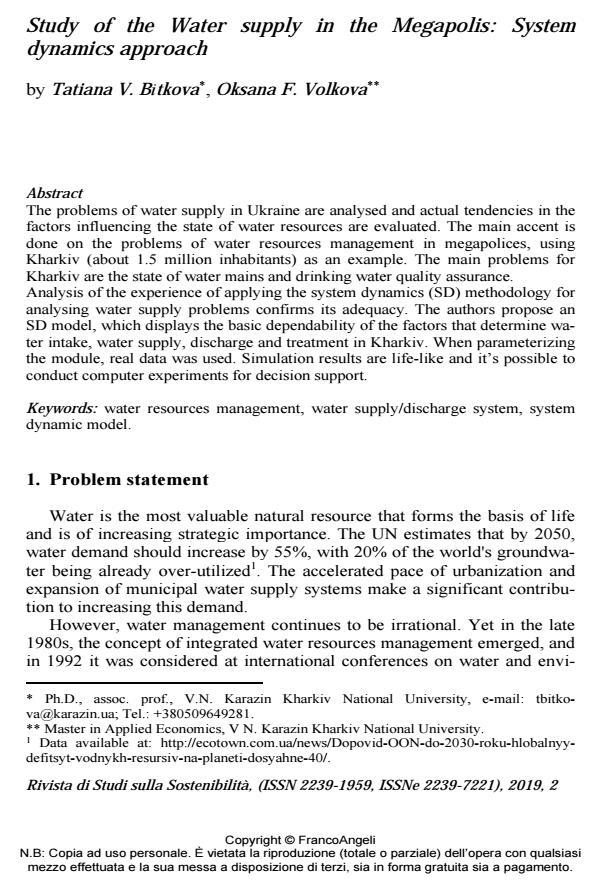Study of the Water supply in the Megapolis: System dynamics approach
Journal title RIVISTA DI STUDI SULLA SOSTENIBILITA'
Author/s Tatiana V. Bitkova, Oksana F. Volkova
Publishing Year 2020 Issue 2019/2
Language Italian Pages 16 P. 109-124 File size 418 KB
DOI 10.3280/RISS2019-002009
DOI is like a bar code for intellectual property: to have more infomation
click here
Below, you can see the article first page
If you want to buy this article in PDF format, you can do it, following the instructions to buy download credits

FrancoAngeli is member of Publishers International Linking Association, Inc (PILA), a not-for-profit association which run the CrossRef service enabling links to and from online scholarly content.
The problems of water supply in Ukraine are analysed and actual tendencies in the factors influencing the state of water resources are evaluated. The main accent is done on the problems of water resources management in megapolices, using Kharkiv (about 1.5 million inhabitants) as an example. The main problems for Kharkiv are the state of water mains and drinking water quality assurance. Analysis of the experience of applying the system dynamics (SD) methodology for analysing water supply problems confirms its adequacy. The authors propose an SD model, which displays the basic dependability of the factors that determine water intake, water supply, discharge and treatment in Kharkiv. When parameter-izing the module, real data was used. Simulation results are life-like and it’s possi-ble to conduct computer experiments for decision support.
Keywords: Water resources management, water supply/discharge system, system dynamic model.
Tatiana V. Bitkova, Oksana F. Volkova, Study of the Water supply in the Megapolis: System dynamics approach in "RIVISTA DI STUDI SULLA SOSTENIBILITA'" 2/2019, pp 109-124, DOI: 10.3280/RISS2019-002009